These seven North American Gulches and Canyons are absolutely breathtaking examples of the beauty of the geology of the earth. Such beauty exists throughout the world, to be certain, of course. No one area has a monopoly on the gifts of Nature. Wherever such beauty is found in the world, however, it must be protected against the depredations of mankind. We hope you enjoy North American Gulches and Canyons.
Fantasy Canyon
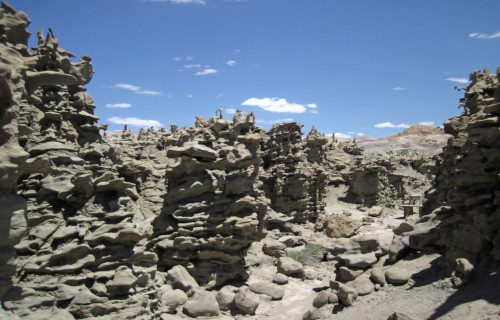
CCL: http://bit.ly/2xQPH8p
Fantasy Canyon Facts
- First on our list of North American Gulches and Canyons comes the eerily breathtaking Fantasy Canyon.
- If ever any place on Earth had an appropriate name, this absolutely incredible site must be it.
- This astonishing geological masterpiece sits in a remote and rather rugged section of North America.
- It also remains popular for the extraordinary geologic marvels present there which perhaps represent some of the most unique on Earth.
- Furthermore, the Utah Bureau of Land Management protects this small in area but truly unique place, to preserve its pristine beauty.
- The breathtaking beauty of the canyon continues to be extremely fragile, however, and therefore synonymous with Nature’s China Shop.
- Finally, in 1909, the paleontologist Earl Douglass was the first to document this site.

CCL: http://bit.ly/2xQPH8p
Fantasy Canyon Physical Description
Firstly, the rocks in Fantasy Canyon originally deposited during the late portions of the Eocene Epoch, between 38-50 million years ago.
However, the extraordinary features of the canyon (contained within a scant 10 acres (4.6 hectares) do not constitute its only claim to distinction.
Furthermore, subsequent erosion, along with the particular composition of the rocks themselves, led to the creation of the incredible features present today.
Horizontal mineral deposits also run through the rock formations and actually two different mineral veins present.
One of these deposits consists of Gilsonite, a mineral based on hydrocarbons. The other vein is comprised of magnetite, which is a mineral with magnetic properties.
Fantasy Canyon Location and Uniqueness
Most notably, the utterly astounding Fantasy Canyon formed in what now constitutes northeast Utah, in the United States.
Also, the region of the canyon originally bordered an ancient lake, which served as the original source of the sandstone in the area.
Further, ongoing sedimentation deposited sandstone, siltstone, and shale which erode at different rates. The sandstone seems more durable than the others, however.
Also, as the other eroded, the unique features of Fantasy Canyon developed. These have been augmented by wind erosion over the ensuing millions of years.
To top things off, the canyon is also home to an extensive number of fossils, dating back to the Eocene Epoch.
Buckskin Gulch
Buckskin Gulch Facts
- The second of our marvelous North American Gulches and Canyons is fabulous, albeit dangerous, Buckskin Gulch.
- This amazing location represents a magnificent slot canyon located in a rather remote and isolated region of North America.
- This incredible marvel of geology also joins one of the tributaries of the Paria River, which itself forms a tributary of the Colorado River.
- Furthermore, the gorgeous Buckskin Gulch remains the longest and deepest known slot canyon in its region.
- In addition, though other similar canyons elsewhere measure deeper, experts believe it to be longest slot canyon on earth.
- Finally, it now ranks as one of the preferred destinations for hikers and amateur explorers in the country.

Buckskin Gulch Physical Description
Ranking as an exceptionally long example of North American Gulches and Canyons, breathtaking Buckskin Gulch measures more than 13 mi (21 km) in length.
The walls of this amazing site also consist primarily of sandstone, and the depth of the slot canyon varies with the terrain.
This depth ranges rather significantly, from 40-500 ft (10.1-1502.4 m). Also, over the majority of its length, the canyon measures less than 10 ft (3 m) in width.
The temperatures also usually stay much cooler than the surrounding desert. Lastly, even a few areas of quicksand exist within Buckskin Gulch.

Buckskin Gulch Location and Hazards
Regrettably, however, for those who would enjoy its pristine beauty, Buckskin Gulch formed in a remote section of the state of Utah, in the United States.
Though it is an incredibly beautiful sight, it can also be extraordinarily perilous. The pools of water can be deceptive and may appear shallow, but be more than 10 ft (3 m) deep.
The depth and convoluted nature of the passage also greatly affect the environmental conditions. Due to this, little direct sunlight reaches the canyon floor.
In addition, quicksand forms occasionally and does so in random locations. Also, flash floods continue to be a primary danger.
A rainstorm as far away as 50 mi (80 km) may send such floods careening through the canyon with virtually no warning.
In the confined spaces of Buckskin Gulch, these sudden floods may descend upon hikers with water as deep as 100 ft (30.5 m) in a matter of seconds.
Warning sirens have been erected along the length of the canyon to warn hikers of this potential danger. However, the flash floods form so quickly that there is often insufficient time for the hikers to exit the canyon.
Antelope Canyon
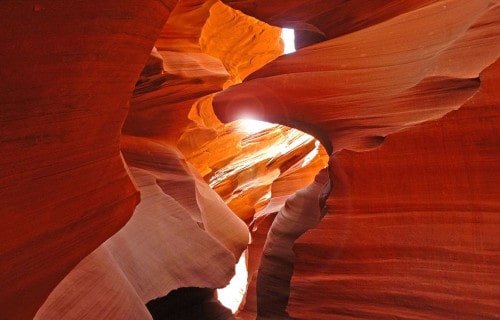
CCL: http://bit.ly/2zBWbKi
Antelope Canyon Facts
- The next beautiful location on our list of North American Gulches and Canyons is the irresistible Antelope Canyon.
- This truly amazing wonder of Nature represents yet another visually stunning geological formation in its part of the world.
- Furthermore, located within the Leechee Chapter of the Navajo Nation in Arizona, it actually comprises two sections.
- First, is The Crack or Tse bighanilini in the Navajo language, meaning the place water runs through rocks.
- Second is the Corkscrew or Hazdistazi in Navajo, meaning Spiral Rock Arches.
- Since it also formed on what is now on native Navajo land, it remains accessible only by guided tours.
- The terrain in this remote area is rather hazardous and access is strictly controlled for public safety.

CCL: https://bit.ly/1p2b8Ke
Antelope Canyon Physical Description
The astounding beauty of Antelope Canyon is compacted into a short distance, as the canyon only measures a total of about 1,995 ft (607 m).
In addition to its pristine beauty, the breathtaking landscape of this magnificent location also has a rather fascinating origin.
Most notably, long-term erosion of the native Navajo sandstone in the region formed the canyon into two distinct sections.
This occurred over the course of thousands of years primarily due to the flash floods the region remains prone to during the monsoon season.
Also, a secondary erosive effect was that of desert winds funneling through the slot canyon throughout the years, with powerful force.

CCL: https://bit.ly/1ryPA8o
Antelope Canyon Location and Hazards
The awesome splendor of Antelope Canyon formed in an especially rugged area of what now constitutes the state of Arizona, in the United States.
Flash floods also continue to pose a serious danger to the Antelope Canyon, even though safety measures exist. The United States National Weather Service has a warning siren in place at the point where tours enter the canyons.
However, the flow rate of such floods through the two sections of Antelope Canyon is varied and unpredictable.
On August 12, 1997, prior to the installation of the siren, eleven tourists lost their lives in a sudden flash flood in the Lower Antelope Canyon.
No rain was falling at the site, but a locally heavy thunderstorm 7 mi (11.2 km) upstream dumped enormous quantities of water into the slot canyon in a matter of minutes.
Coyote Gulch
Coyote Gulch Facts
- This next dazzling location on our list of North American Gulches and Canyons bears the rather interesting name of Coyote Gulch.
- The breathtaking Coyote Gulch is a rather small tributary of a much larger river, known for its incredible geological features.
- Although the current water flow through the gulch amounts to no more than a trickle, over time it carved marvelous features.
- Furthermore, several other incredible wonders of Nature also formed in or near this astounding location.
- The location has become a popular tourist destination, despite rough terrain and is rather difficult to access.
- Thankfully, its entire length resides in a combination of several National Parks and protected areas.
Coyote Gulch Physical Description
The stunning Coyote Gulch itself measures a rather impressive 25 mi (40 km) in overall length, although its course roams extensively.
Its headwaters originate in a 14-mile (23 km) long section of a large, nearby plateau, which formed during the Cretaceous Period.
The streambed remains quite sandy, and the small trickle of water flowing through it rarely measures more than 2 in (5 cm) deep.
At its deepest, this gorgeous canyon has a depth of roughly 900 ft (270 m), though the great majority of its length measures significantly less.
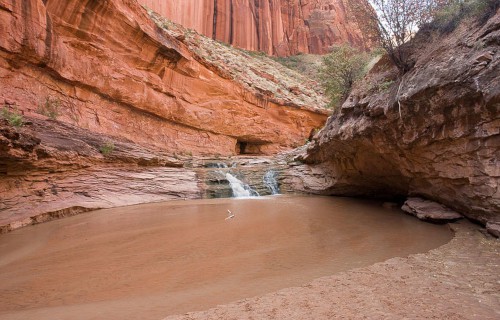
CCL: http://bit.ly/2xLZ0ap
Coyote Gulch Location and Geology
The mesmerizing Coyote Gulch formed in what we now know as the state of Utah, in a beautiful but rugged portion of North America.
This work of Nature boasts an astonishing array of natural features, seeming like a world unto itself.
In addition to Spooky Gulch, a visitor finds beautiful arches and natural bridges, some of which are quite large.
Another of these represents a most unusual, jug-style arch in the north wall of the canyon, known as Cliff Arch.
Also, portions of the length of the stream remain lined with small trees and numerous bushes and other small forms of plant life.
Finally, numerous small but beautiful waterfalls formed within the canyon, further adding to its already wondrous beauty.
Big Cottonwood Canyon
Big Cottonwood Canyon Facts
- The fifth mesmerizing location on our list of North American Gulches and Canyons is the appropriately named Big Cottonwood Canyon.
- This stunning site forms an extremely picturesque canyon located in a section of the Wasatch Mountain Range, in North America.
- The canyon remains extremely popular with tourists, partly because it contains numerous small lakes surrounded by terrain perfect hiking. Some trails hikers easily manage, while others tend to be quite arduous.
- It also represents an extremely popular destination for school field trips, since the numerous fields contain bountiful numbers of wildflowers.
- Among these are several endemic species that also rank as extremely rare.
Big Cottonwood Canyon Physical Description
Firstly, the stunningly beautiful, and appropriately named, Big Cottonwood Canyon measures roughly 15 mi (24 km) in length.
Secondly, this impressive geological beauty formed primarily because of the motion of the similarly named Big Cottonwood Creek.
In addition, the remarkable location has a sharply V-shaped formation and serves as home to numerous impressive rock formations.
This gorgeous canyon also forms a watershed canyon, and the waters that flow through it represent the principal source of drinking water for the Wasatch Front.
The ancient glacial activity also played a large role in the formation of this gorgeous location. The glacier receded roughly 10,000 years ago.
Big Cottonwood Canyon Location and Distinctiveness
The appropriately named, and visually quite stunning, Big Cottonwood Canyon lies situated in the state of Utah, in the United States.
Also, the weather conditions vary with great extremes from one end of the canyon to another, regardless of the season.
Snow also commonly reaches depths of as much as 15 ft (4.6 m) at the top of the canyon, while the bottom of the canyon remains devoid of any snowfall.
In the winter, Big Cottonwood Canyon also serves as one of the most frequented locations for skiers and snowboarders in the entire country.
For that reason, pets and any other domesticated animals remain forbidden within its boundaries.
It also serves as home to a wide variety of beautiful plant life, including flowers and numerous cottonwood trees.
Some of these plants also rank as quite rare, and in fact, one of them can be found nowhere else in the world.
Spooky Gulch
Spooky Gulch Facts
- Next on our list of some of the awesome North American Gulches and Canyons is the marvelous Spooky Gulch.
- This aptly-named and rather distinctive feature forms a short, narrow slot canyon located in a rather isolated section of the country that it formed in.
- While truly visually stunning, it nonetheless remains by many to be considered a rather dark and often mysterious location through which to trek.
- Yet, perhaps for that very reason, it also continues to remain extremely popular with tourists.
- Also, if one is in excellent shape, the entire length can be traversed in about 20 minutes. However, taking photos will require much more time, given its incredible beauty.
Spooky Gulch Physical Description
The astonishing marvel known as Spooky Gulch measures roughly 1.2 miles (1.9 km) in length and also averages 30 feet (10 m) in depth.
This appropriately named gulch remains, however, extremely narrow. Consequently, the gulch rarely measures more than 15 inches (0.5 m) wide.
In fact, its name derives from the fact that due to its narrowness and overhanging ledges very little light reaches the floor of the gulch.
This, therefore, leaves the floor of the slot canyon in a perpetual twilight during the day. Additionally, the entire length of the location consists of twists and bends, with any of these often angling more than 180 degrees.
In addition, only a few places in the canyon exist where one can one see more than 10 feet (3 m) ahead exist in the entire canyon.
Spooky Gulch Location and Nature
The sincerely astonishing Spooky Gulch formed in what now constitutes the state of Utah, in the United States.
This marvel of Nature originally formed through the geological process of erosion. The walls of the canyon consist entirely of sandstone. The walls also remain famous for their knobby formations.
The floor of the gulch principally consists of stone, yet sand deposits occasionally drift in and settle in places. The opening of the Gulch formed rather wide, yet within 200 ft (61 m) of the entrance, it funnels into its narrow straits.
During the rainy season, shallow pools of water often accumulate within Spooky Gulch. The unique colored layers are a consequence of the formation of the native Navajo sandstone.
Red Canyon
Red Canyon Facts
- Last on our list of North American Gulches and Canyons but certainly not least, comes the gorgeous Red Canyon.
- Firstly, the breathtaking Red Canyon forms an incredibly picturesque slot canyon in a rugged and rather remote region.
- The Canyon also sits adjacent to the equally stunning Bryce Canyon National Park, located in the state of Utah.
- In fact, the location remains a highly popular tourist attraction for those who admire the beauty of nature in North America.
- Further, the shallow canyon formed on the side of the Paunsaugunt Plateau and its age measures roughly 60 million years.

Red Canyon Physical Description
The striking Red Canyon measures about 9 mi (14.5 km) long and also presents an extremely wide variety of terrain along its length.
In addition, both the floor and walls of canyon consist almost entirely of red sandstone. Also, erosion has created numerous geological formations.
These include tall spires, pinnacles, and hoodoos which remain visible throughout the length of the canyon.
The entire canyon, along with the surrounding terrain, also forms part of the Dixie National Forest, and thus enjoys some protection.
Yet, unlike many slot canyons, there is also moderate tree cover lining much of the canyon. Many different types of bushes and scrub are also present.
Red Canyon History and Tourism
Perhaps most notably, the marvelous beauty of Nature known as Red Canyon formed in a rugged portion of the United States.
The stunning rugged beauty of the site was known and admired by the Native Americans for untold centuries before European explorers and settlers first beheld its splendor.
An extensive and well-maintained system of trails, some of them originally blazed centuries ago by Native American residents of the region also provides access to the area.
The U.S. Forest Service maintains the area and permits activities that include, picnicking, hiking, camping, and of course, sightseeing.
Finally, the Service also maintains a visitor center adjacent to the canyon.
North American Gulches and Canyons
We sincerely hope that you have enjoyed our list of these few of the gorgeous North American Gulches and Canyons. If you love and appreciate the beauty of the geology of this world, please join us in doing all you can to protect and preserve it. And remember these seven North American Gulches and Canyons represent just a small portion of the breathtaking sights to see in this region of the world. And just imagine what there is to enjoy…and preserve…throughout the rest of the world.
Check out our other articles on 7 Astounding Polar Creatures, 10 Extraordinary Reptiles, 5 Completely Unique Volcanoes, 3 Remarkable South American Reptiles



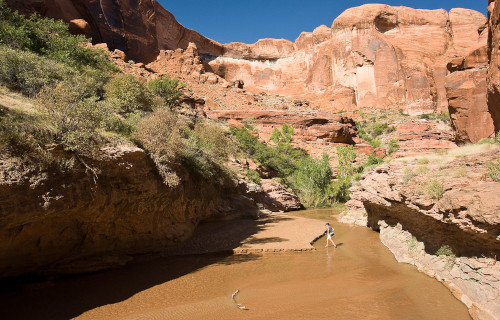


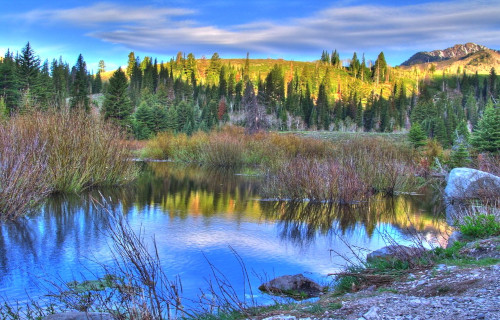


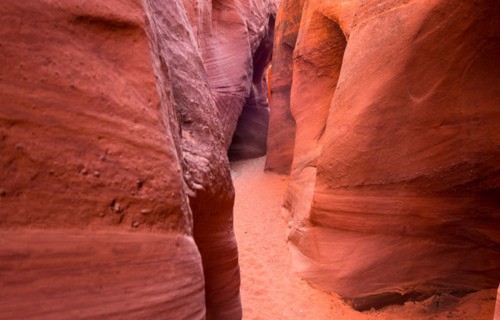
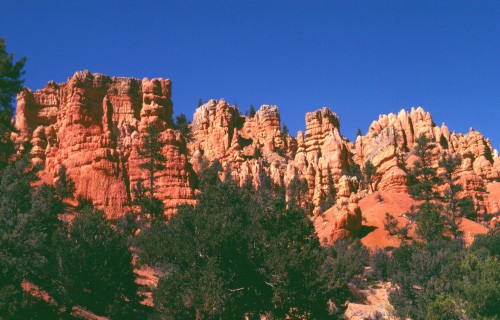
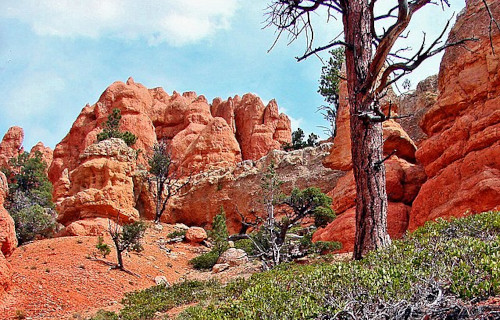









Leave a Reply